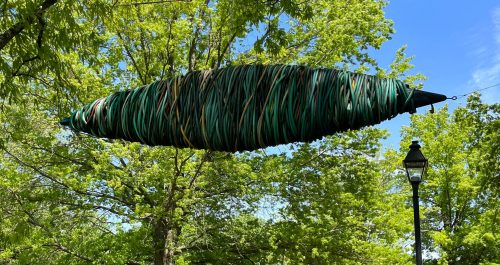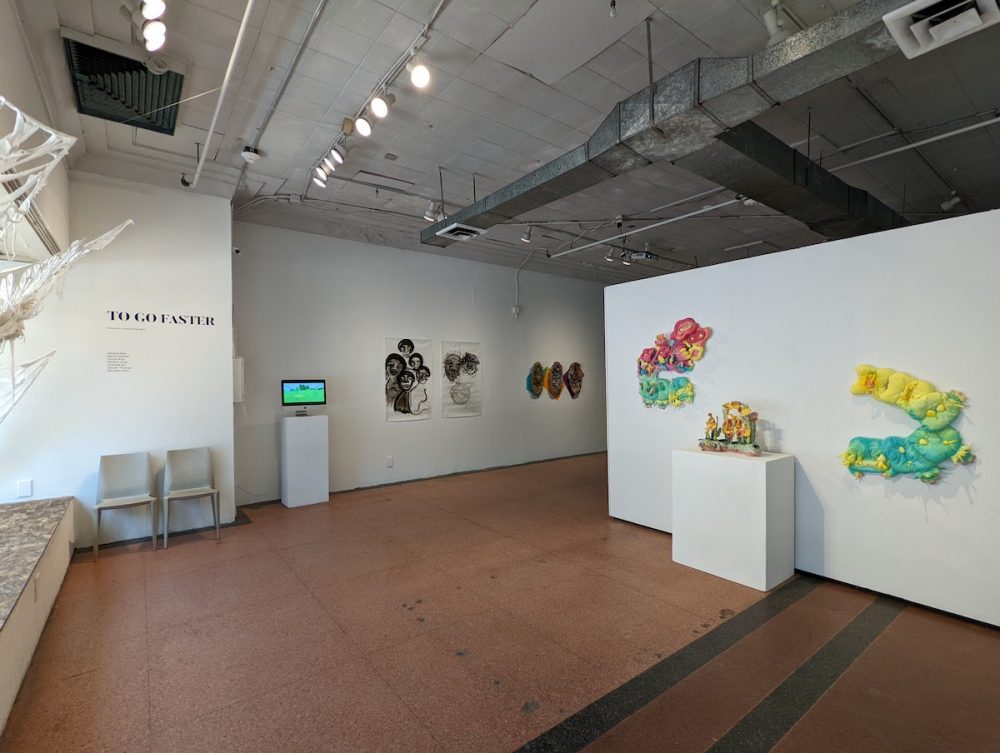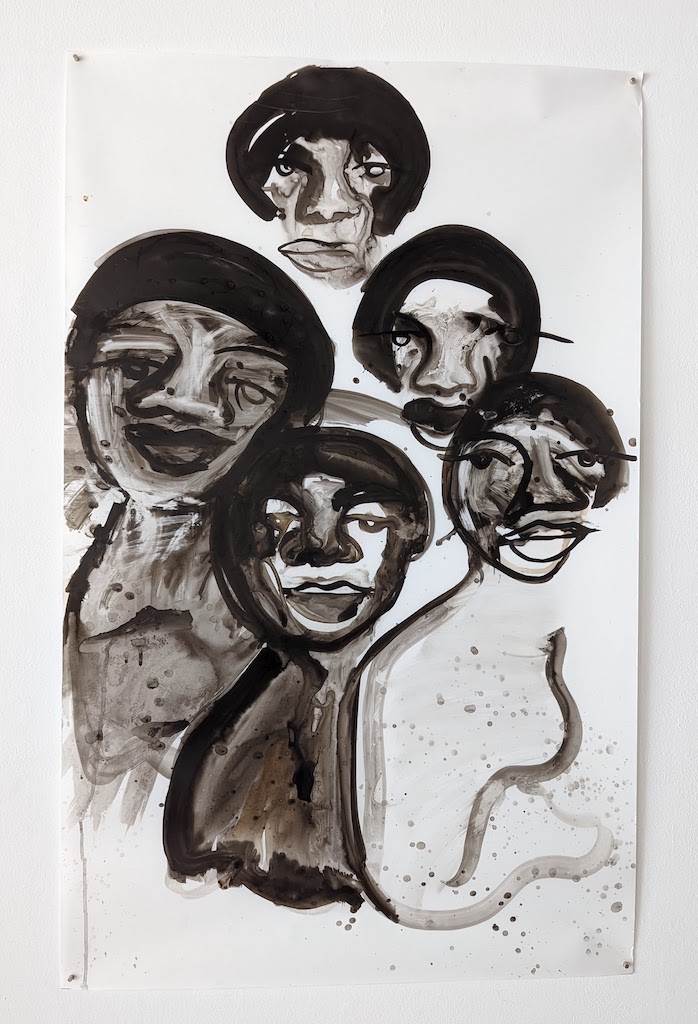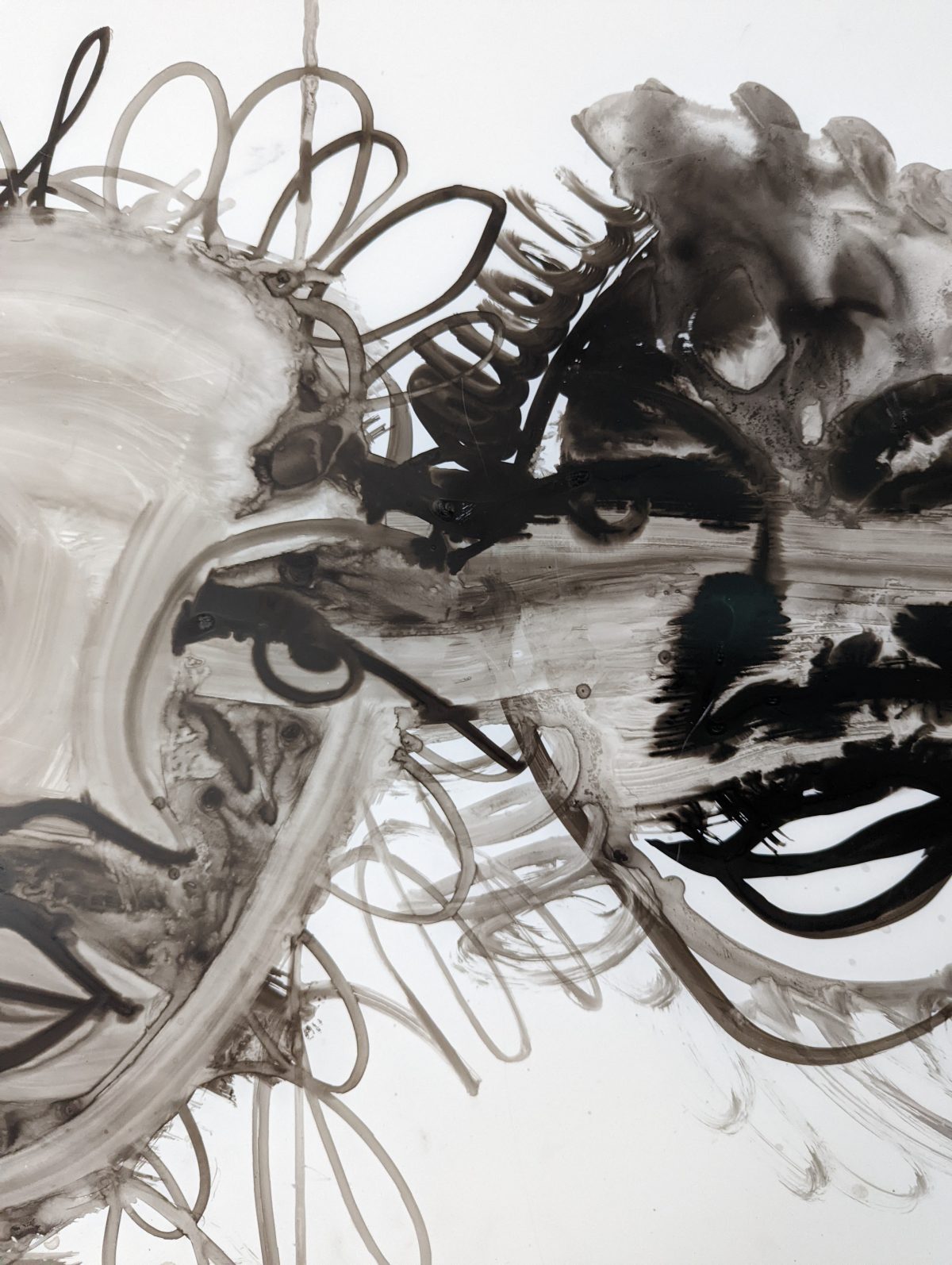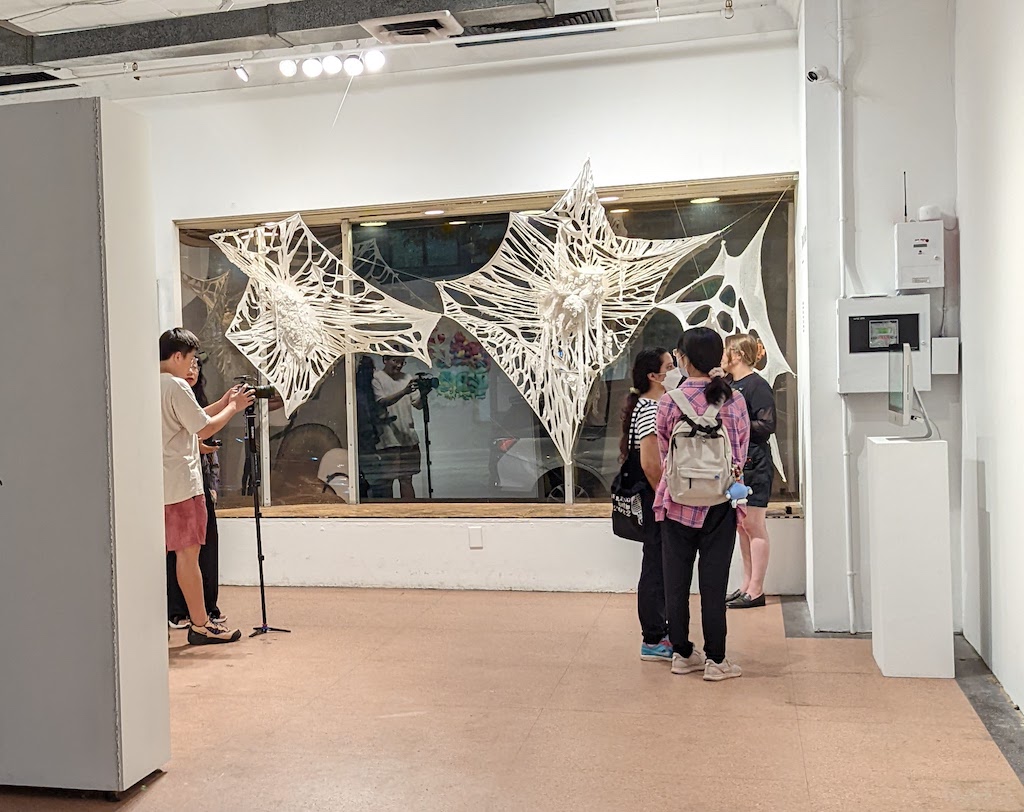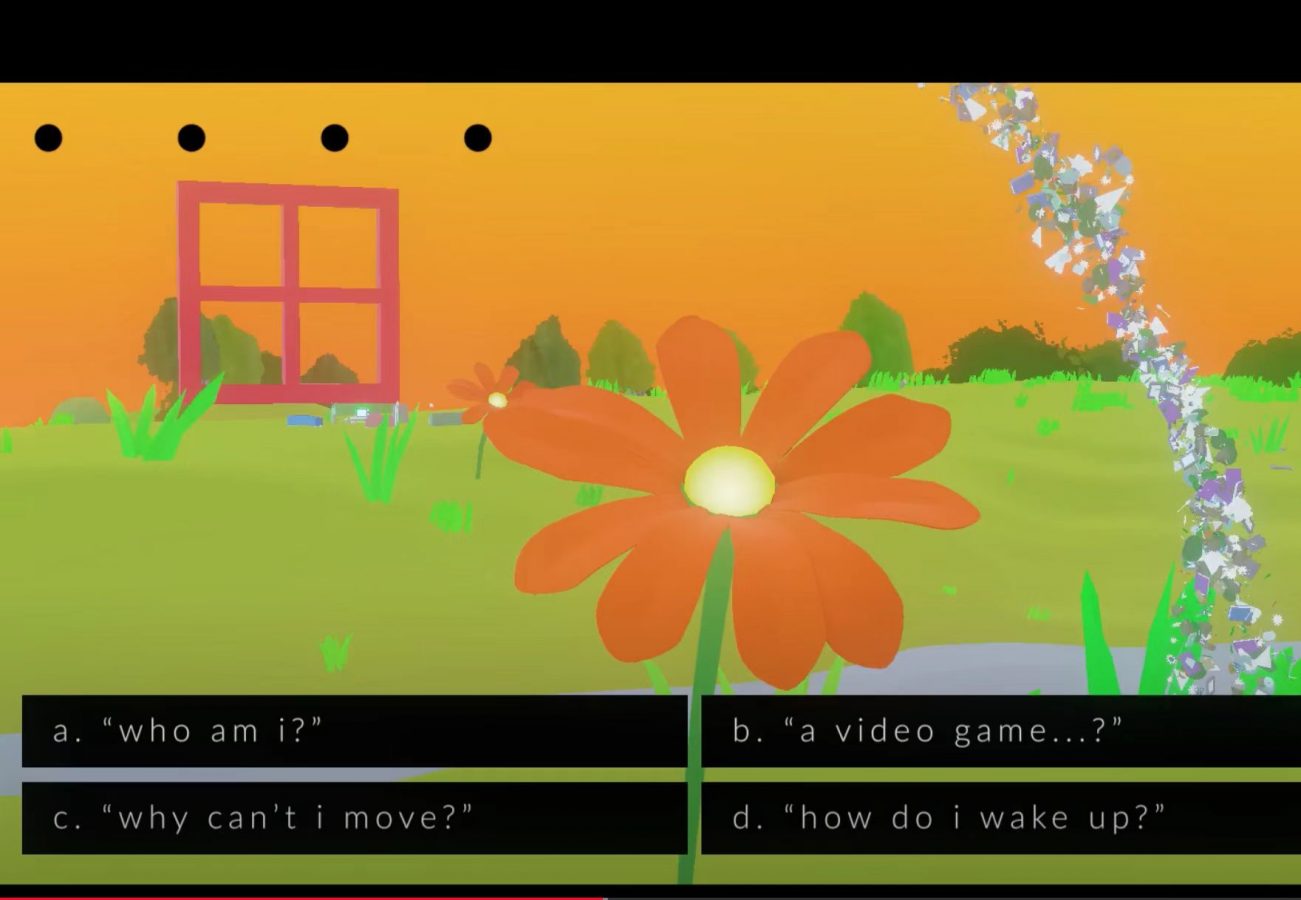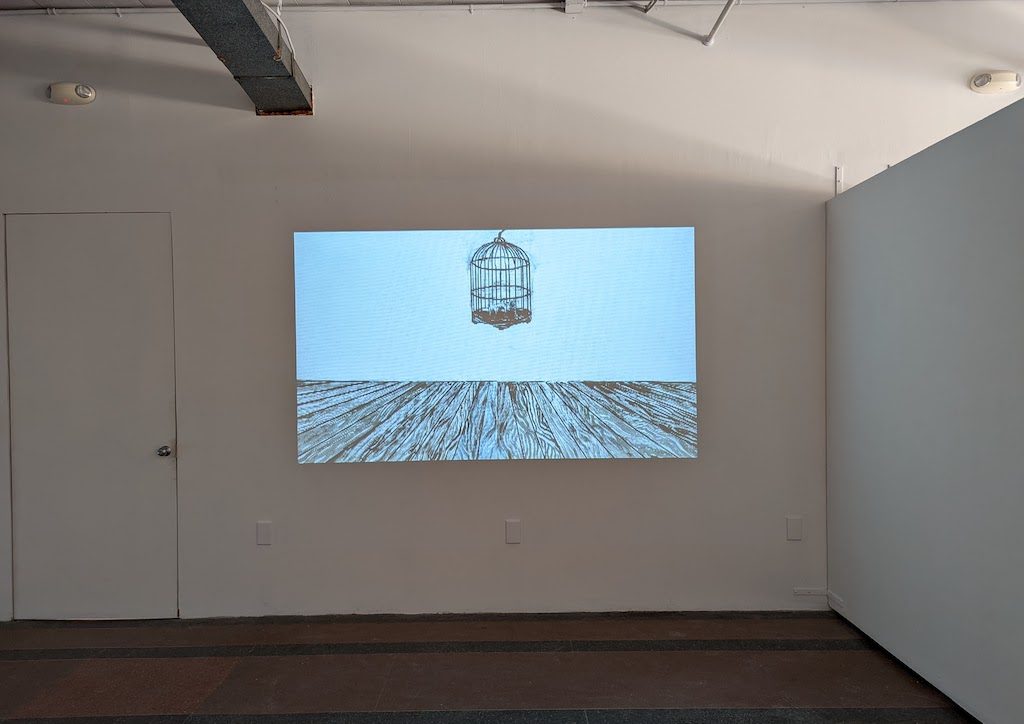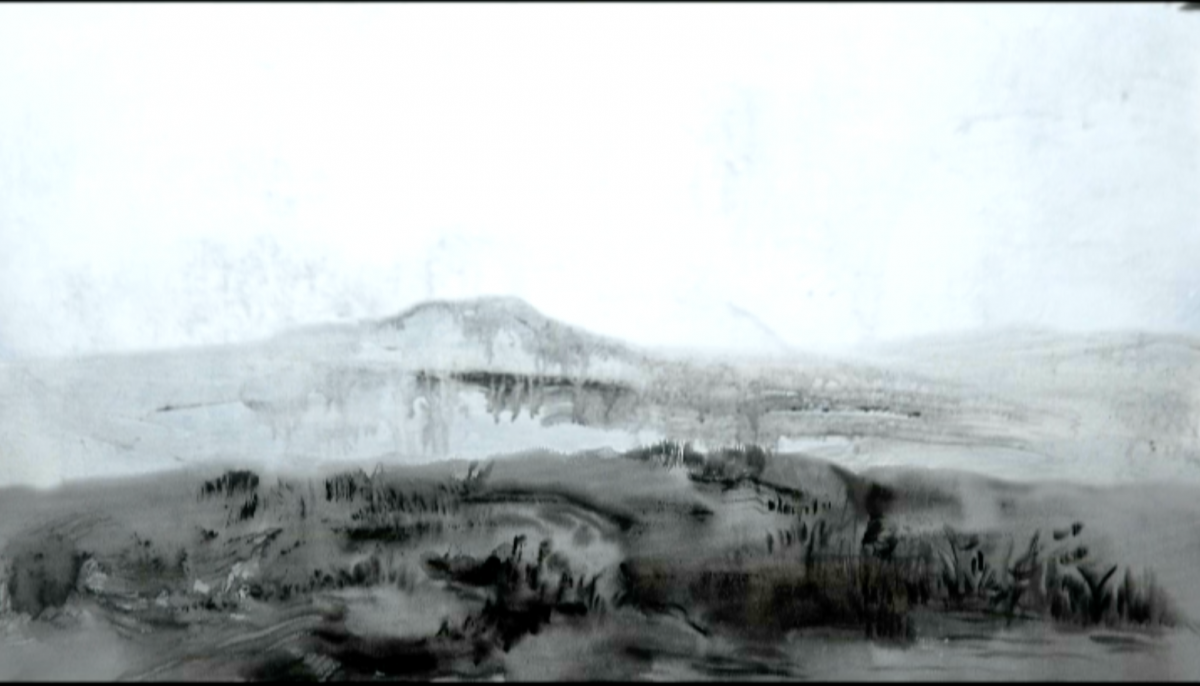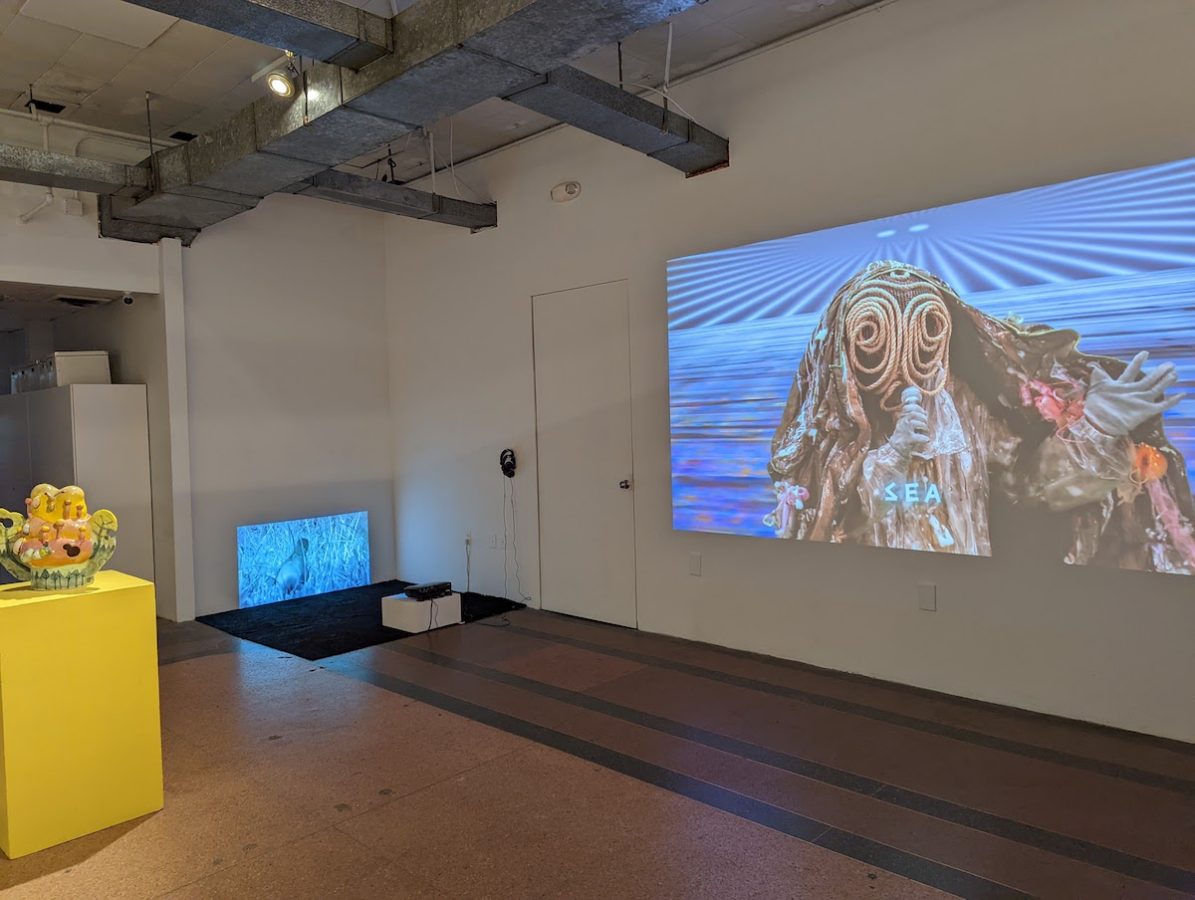Fast forward. Rewind. Pause. Current Space’s To Go Faster is a dynamic exhibition that explores the rapid pace of society, the collective need to move at a brisk speed, and how that affects our surroundings. The curatorial collaboration between Tado Art Centre and MICA NFAT Media includes a diverse group of six artists—from recent grads to established makers—who engage our society’s obsession with velocity.
The show’s progression is similar to the metaphorical act of falling down a rabbit hole and finding more whimsical visuals the further one progresses, allowing visitors to reflect on the subtopics within the exhibition and their connections to the main theme: the swiftness of time in a contemporary context.
Lehna Huie’s ink-on-paper portraits, “The Moment of Time” (No. 1, 2, & 3), bring a strong element of humanity to the space. Huie uses bold linework and splatter techniques to depict a group portrait of unidentified individuals who share the same tranquil expression. “The Moment of Time” No. 1 and No. 3 are limited to only including the individual’s faces, while No. 2 includes the abstract silhouette of those in the foreground. The series asks viewers to pause and reflect on the people who are present in the moments of our lives that leave an impact on us. As the only black and white drawings, Huie’s portraits visually round out the exhibition, a subdued counterbalance to brightly colored sculptures and two-dimensional animation by Haochen Zhao and Haomin Peng, respectively.

